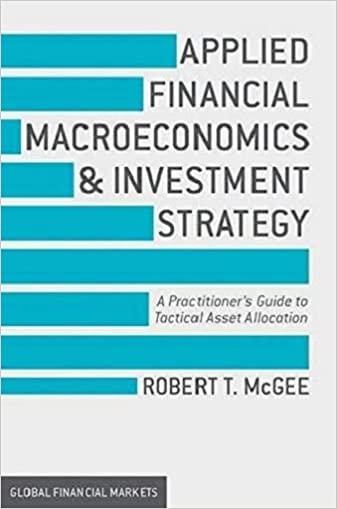Answered step by step
Verified Expert Solution
Question
1 Approved Answer
Estate and Gift Tax Planning Estate and gift tax planning are essential aspects of financial management, particularly for individuals with significant assets and wealth. These
Estate and Gift Tax Planning
Estate and gift tax planning are essential aspects of financial management, particularly for individuals with significant assets and wealth. These planning strategies aim to minimize the tax burden associated with transferring assets to heirs or beneficiaries while maximizing the value of the estate passed on to future generations.
Estate Tax:
Estate tax is a tax levied on the transfer of assets upon the death of the owner. The estate tax applies to the total value of an individual's estate, including cash, real estate, investments, and other assets, exceeding a certain exemption threshold set by the government. Proper estate tax planning involves implementing strategies to reduce the taxable value of the estate, such as establishing trusts, gifting assets during one's lifetime, utilizing exemptions and deductions, and leveraging life insurance policies.
Gift Tax:
Gift tax, on the other hand, is a tax imposed on the transfer of assets from one individual to another during their lifetime. The gift tax applies to the total value of gifts given by the donor, exceeding a specified annual exclusion amount. Effective gift tax planning involves utilizing the annual gift tax exclusion, making taxfree gifts to beneficiaries, utilizing lifetime gift tax exemptions, and implementing strategies to transfer wealth taxefficiently while minimizing the donor's tax liability.
Planning Strategies:
Several strategies can be employed for effective estate and gift tax planning:
Establishing irrevocable trusts to hold assets and remove them from the taxable estate.
Utilizing annual gift tax exclusions to make taxfree gifts to individuals.
Leveraging lifetime gift tax exemptions to transfer significant wealth tax efficiently.
Implementing life insurance policies to provide liquidity for estate taxes.
Using charitable giving strategies to reduce the taxable estate while supporting philanthropic causes.
Fill in the blanks type question:
Effective estate and gift tax planning involve utilizing various strategies to minimize tax liability and maximize the value of assets transferred to heirs. One common strategy is to establish trusts to hold assets and remove them from the taxable estate.
a Revocable
b Irrevocable
c Discretionary
d Testamentary

Step by Step Solution
There are 3 Steps involved in it
Step: 1

Get Instant Access to Expert-Tailored Solutions
See step-by-step solutions with expert insights and AI powered tools for academic success
Step: 2

Step: 3

Ace Your Homework with AI
Get the answers you need in no time with our AI-driven, step-by-step assistance
Get Started


